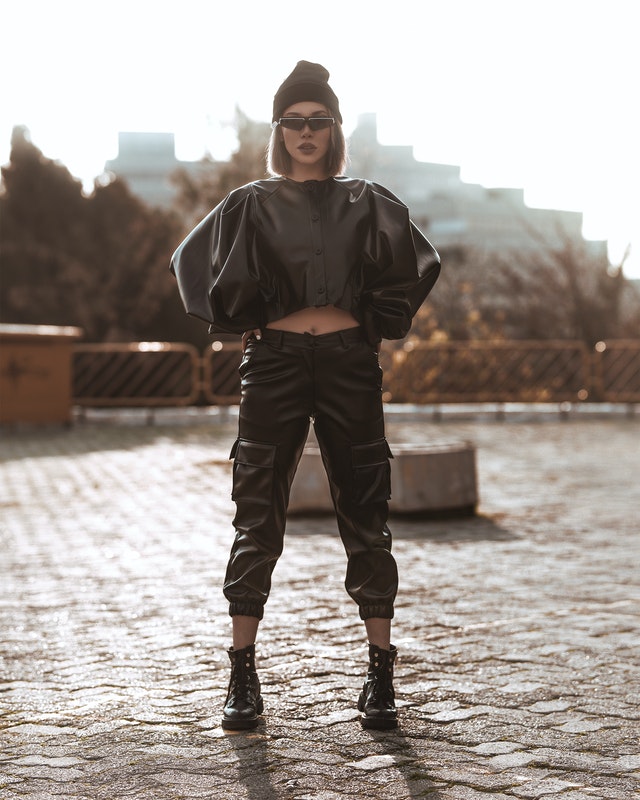Leather is a classic textile that’s used in the construction of countless men’s and women’s garments. In addition to jackets, there are pants, shorts and even dresses made of leather. Leather, of course, is used to make many accessories as well, some of which include belts, bracelets and caps.
While you’ve probably come across some of these leather garments and accessories during your shopping trips, there are several somewhat confusing terms that you may encounter. This post offers a guide to some of the most common leather terms and what they mean.
#1) Grain
Grain refers to the outermost layer of leather. Whether it’s sheepskin, deerskin or cowhide, all types of leather have a grain. Leather is made of animal hide, which is comprised of multiple layers. The outermost layer — the layer found directly underneath the fur — is the grain.
It’s important to note that there are different types of leather grains. During the production of leather, the outermost layer is oftentimes altered. The way in which it’s altered will affect the leather’s grain.
Types of leather grains include the following:
- Top grain: Top-grain leather consists of all types of leather that have the outermost layer or grain intact.
- Full grain: Full-grain leather is a type of top-grain leather that’s characterized by an unfinished and natural grain.
- Corrected grain: Corrected-grain leather, on the other hand, has a finished grain. In other words, the outermost layer of corrected-grain leather is furthe processed to achieve a unique appearance.
#2) Tanning
Tanning is one of the processes by which leather is made. Regardless of grain type, all leather is made by tanning. Tanning is a leathermaking process that involves the treatment of animal hide. It’s performed at a tannery. Tanneries are businesses that specialize in processing animal hide and, ultimately, converting animal hide into ready-to-sell leather.
Tanning is a multistep process. It begins by preparing the animal hide and soaking it in water, after which it’s exposed to various chemicals. It’s known as “tanning” because it traditionally involves the use of an acidic compound known as “tannin.” While some companies still use tannin for this purpose, many of them now use chromium salts. Nonetheless, tanning is still used to make leather out of raw animal hide.
#3) Napa
Napa is a specific type of leather that’s prized for its ultra-fine grain. It still consists of animal hide, and it’s still made by tanning — just like all types of real leather. Napa leather, however, is a type of premium leather with a smoother, finer grain than that of nearly all other types of leather.
Napa leather was invented by The Sawyer Tanning Company in Napa, California. In the past, it was made exclusively in the city of its namesake. Since then, napa leather has found its way into other cities and regions. It’s simply a type of premium, real leather that has a fine and smooth grain. If you rub your hands across a garment made of napa leather, you’ll feel its soft and smooth texture. Other types of leather are smooth as well, but they generally have a thicker grain than that of napa leather.
#4) Patina
When researching leather, you may come across the term “patina.” What is a patina exactly? Patina is the natural aging process that real leather experiences. Over time, leather will develop hints of aging that manifest in the form of a lighter, faded appearance. Known as a patina, it’s a common feature of many types of leather.
Not all types of leather will develop a patina. Rather, only top-grain leather typically develops a patina. Corrected-grain and other types of leather generally don’t develop a patina. If you want a leather garment to develop a patina, you’ll need to make sure that it’s made of top-grain leather and not corrected-grain leather.

#5) Finishing
Finishing refers to a process in which the outermost layer of leather, the grain, is coated with a substance. After cleaning and preparing animal hide, leathermaking companies may add a finishing treatment to the grain. The finishing treatment will essentially create a protective barrier over the grain.
Leather that’s finished tends to feature a glossier and shinier appearance than unfinished leather. The downside to finished leather, though, is that it often fails to develop a patina. If you prefer the aged appearance of leather, you may want to go with unfinished. Unfinished leather offers a more natural and prominent patina than its finished counterpart.
#6) Saddle Soap
Saddle soap has become synonymous with leather. If you’re going to buy a garment made of real leather, you should consider picking up some saddle soap. Saddle soap is a product that used to clean, hydrate and protect real leather.
With saddle soap, you can condition leather garments so that they last longer while maintaining a smoother and softer texture in the process. Real leather has a tendency to dry out. With its porous nature, it will absorb moisture from the surrounding air. Conversely, real leather may release moisture into the surrounding air. If a leather garment releases too much moisture, it will inevitably dry out. Fortunately, you can prevent this from happening by using saddle soap on it.
#7) Faux Leather
Chances are you’ve heard of faux leather at some point or another. Countless clothing stores sell garments made of faux leather. From afar, these garments may look like those made of real leather, but they are strikingly different.
Faux leather is also known as artificial leather. And as the name suggests, it’s not real leather. Faux leather typically consists of a cloth base layer that’s affixed with a synthetic top layer. Some of them have a polyurethane (PU) top layer, whereas others have a vinyl top layer. Regardless, all types of faux leather have a synthetic top layer and a cloth base layer. They aren’t made of animal hide, nor are they tanned or otherwise processed. Therefore, faux leather isn’t real leather.

